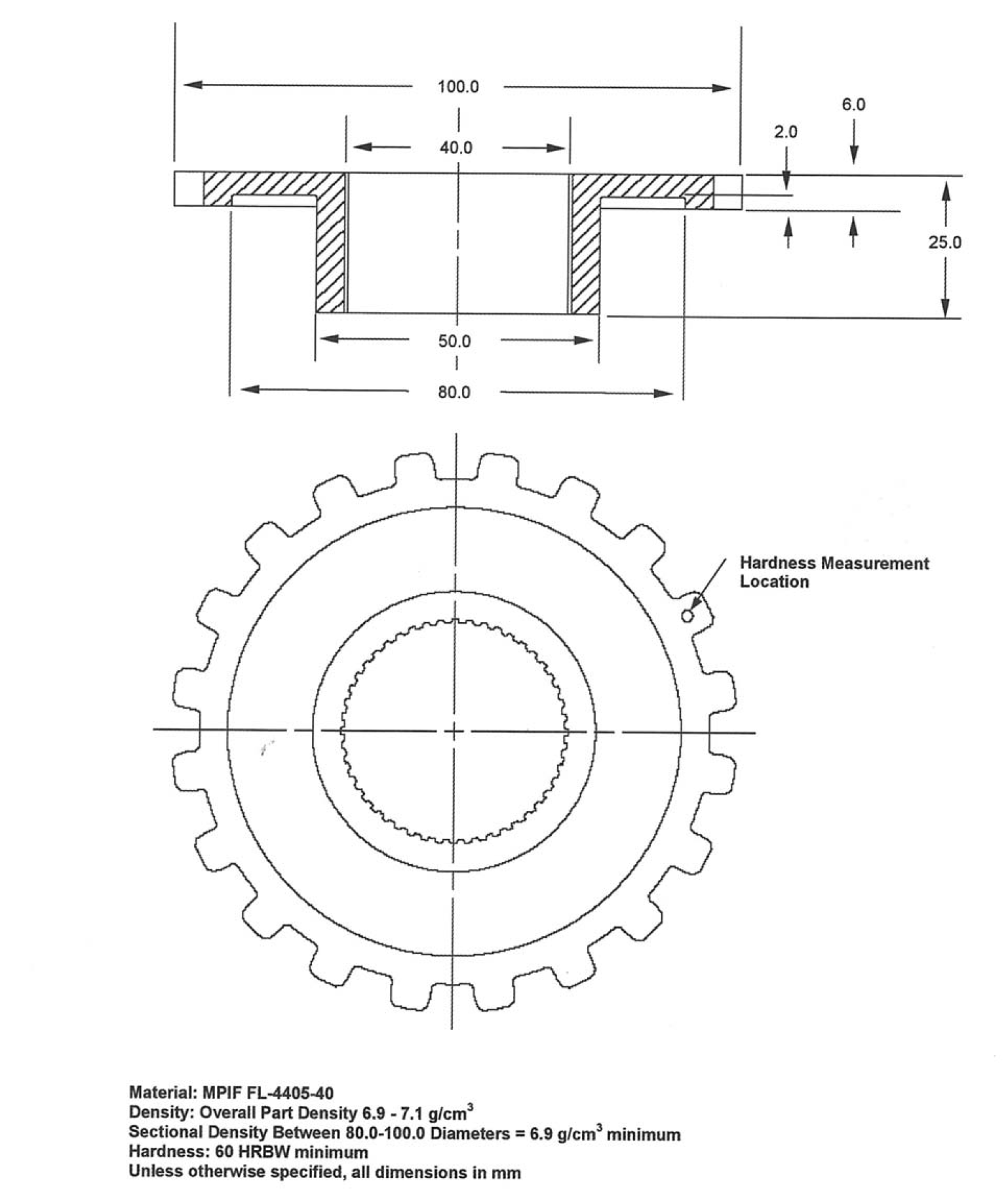Guidelines for Specifying a PM Part
Information from Materials Standards for PM Structural Parts, 2018 Edition
published by Metal Powder Industries Federation

Although MPIF Standard 35 (Materials Standards for PM Structural Parts) provides useful physical and mechanical property design data for engineers familiar with the PM process, those less experienced with this manufacturing process may benefit from additional guidance. The following sections offer some guidelines to consider when using the conventional powder metallurgy process [not metal injection molding (MIM) or hot isostatic pressing (HIP)] for a new product design.
Part Size – the size limitation of PM parts is based on powder compressibility and press tonnage. The typical steel PM part will satisfy the following characteristics:
If the product design will use a nonferrous material the projected area can be increased by 50%.
Part Shape – part geometry must be compatible with a uniaxial compaction motion in the vertical direction (see part drawing for example). Undercut, re-entrant or threaded features are typically formed or machined in a secondary operation. Significant variations in part length in the cross-section require different tooling motions in the compaction press. These are typically limited to five different levels, though additional small changes in part length (levels) are possible through selected tool designs (see the MPIF Design Manual for illustrations of complex PM part designs). Part lengths greater than 1 inch (25 mm) will result in density variation from the top surface (highest density) to the mid length position (lower density).
Part Quantity – due to the use of dedicated “hard” tooling a cost-effective quantity for production orders should be discussed.
Mechanical / Physical Requirements – Standard 35 provides a wide range of design properties to assist selection of the proper material for most product applications. The medium density steel grades (6.4-6.9 g/cm3) typically replace cast iron or plain carbon steel; the high density grades (7.0-7.4 g/cm3) typically replace ductile iron and many heat treated steels; powder forged and pore-free material systems typically replace the high performance steels. If the part design has critical property requirements beyond the typical values listed in the standard, these requirements should be specified on the engineering print.
To select a material optimum in both properties and cost-effectiveness, it is essential that the part application be discussed with the PM parts manufacturer. Both the purchaser and the manufacturer should, in order to avoid possible misconceptions or misunderstandings, agree to the following conditions prior to the manufacture of a PM part: minimum strength value, grade selection, chemical composition and alloying method, proof testing, typical property values and processes that may affect the part application.
Part Use – the part specification or drawing should provide as much additional information regarding the part use as possible. Providing an assembly drawing is useful in more fully understanding the part application. The following questions are most important for the material and process selection:

Want to learn more about PM 101? Schedule a training with us!




